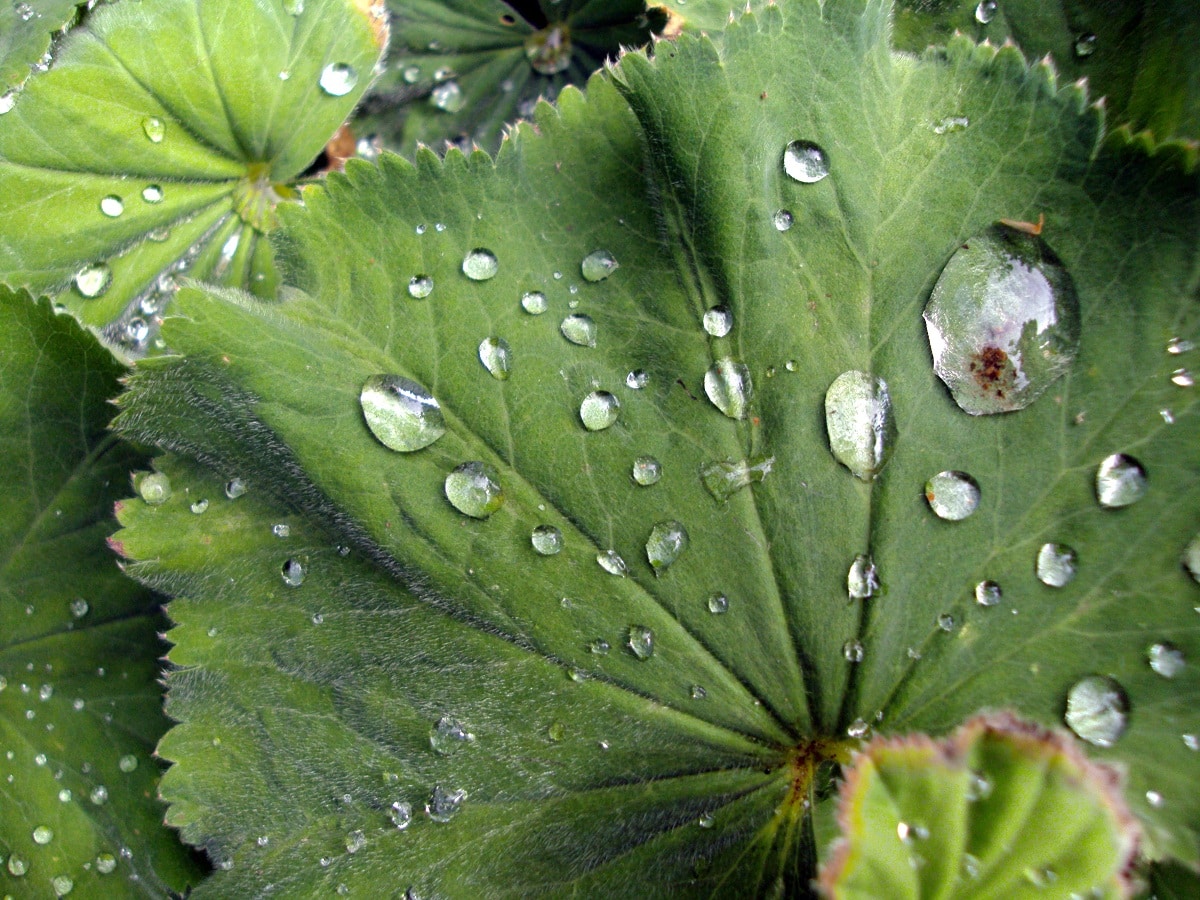
Surely you have seen thousands of times in winter during the nights of the cars end up impregnated with water. These water droplets are known as dew. Many people don't know what is dew and how it is formed. In meteorology it is known as the dew point and its characteristics depend on environmental conditions.
For this reason, we are going to dedicate this article to telling you everything you need to know about what dew is, how it is formed and what its characteristics are.
what is dew

The concept of dew point refers to the moment when water vapor in the atmosphere condenses and is produced depending on temperature, frost, fog or dew.
Dew always has water vapor in the air, the amount of which is related to the humidity level. When the relative humidity reaches 100%, the air becomes saturated and reaches the dew point. It is important to note that relative humidity is the link between the amount of H2O vapor in the air and the maximum amount of H2O that can exist at the same temperature.
For example, when the relative humidity is said to be 72% at 18ºC, the water vapor content in the air is 72% of the maximum amount of water vapor at 18ºC. If at that temperature 100% relative humidity is reached, the dew point is reached.
Thus, the dew point is reached when the relative humidity increases while the temperature does not change or when the temperature decreases but the relative humidity remains the same.
Key features

In addition to all of the above, it is worth knowing other interesting facts about the dew point, such as:
- The ideal dew point for humans is considered to be 10º.
- Experts in the field of meteorology say that this factor can be used to determine how easily or even how strongly the outer layers of the skin heat up.
- In those places where it is considered that there are high dew points, such as above 20º, determine that the sensations of humidity and hot flashes are very pronounced. That means it's hard for a person's body to sweat and feel comfortable.
- To achieve this health, it is estimated that the dew point should be between 8º and 13º, while there is no wind, the temperature will reach values between 20º and 26º.
Specifically, the current table of dew points and their classification is as follows:
- Very dry air: Dew point between -5º and -1º.
- Dry air: 0º to 4º.
- dry wellness: 5th to 7th.
- Maximum wellness: 8º to 13º.
- Moist wellness. In this particular case, the dew point is between 14º and 16º.
- moist heat: 17º to 19º.
- Suffocating damp heat: 20º to 24º.
- Unbearable heat and high humidity: 25º or higher dew point.
If we go back to the previous values, we can say that if the temperature remains at 18ºC and the relative humidity reaches 100%, the dew point will be reached, so the water in the air will condense. So there will be water droplets (fog) in the atmosphere and water droplets (dew) on the surface. Of course, these suspensions or droplets of water on the surface do not get wet like precipitation (rain).
dew point measurements

Condensation in compressed air is problematic as it can lead to blocked pipes, mechanical failure, contamination and freezing. The compression of the air increases the pressure of the water vapor, which increases the dew point. This is important to keep in mind if you are venting air to atmosphere before taking measurements. The dew point at the measurement point will be different from the dew point in the process, the dew point temperature in compressed air varies from room temperature and even in special cases down to -80 °C (-112 °F).
Compressor systems without air drying capabilities tend to produce saturated compressed air at room temperature. Systems with freeze dryers pass compressed air through a cooled heat exchanger that condenses water out of the air stream. These systems typically produce air with a dew point of at least 5°C (41°F). Desiccant drying systems absorb water vapor from the air stream and can produce air with a dew point of -40°C (-40°F) and drier when needed.
Relationship with frost and mist
There is no doubt that wet vegetation has been an inspiration for many nature photographers. And, although to a lesser extent, it can still be seen in some towns that resist the drop in thermometers. In these lucky cases, you will be able to see in the light how the leaves and some spider webs acquire a new power in nature. It is dew, an interesting expression of the combination of water and plants.
Dew is a phenomenon between physics and meteorology that only occurs when the air is saturated. Namely, when it exceeds its maximum capacity to retain water in the vapor state. Once this limit is exceeded, the air becomes saturated and water droplets begin to form and settle on the foundations of nature. This is the basic mechanism of dew formation.
Surface heat loss can also cause these traditional water droplets to form if the ambient humidity is not too high. But if all the moisture on the ground evaporates directly, these tiny droplets create the popular fog.
The dew phenomenon is characterized by clear, windless skies and humid air at night, especially in spring and autumn.. But this is a process that requires strict environmental conditions. If the temperature is near the dew point, dew formation is almost guaranteed when water vapor in the air begins to condense, but not above or below the dew point. But if the temperature stays below the dew point, fog is likely to form. Finally, when the temperature drops below 0°C, a traditional frost forms.
I hope that with this information you have been able to resolve all your doubts about what dew is, how it is formed and what characteristics it has.